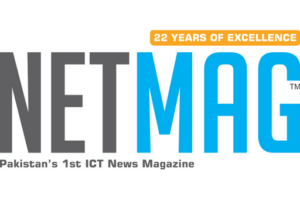In an era where information is at our fingertips, Wikipedia has established itself as a go-to source for quick insights on countless topics. But can you really trust Wikipedia as a sole reference for your research? This article delves into the risks associated with relying solely on information from a Wikipedia page, emphasizing the importance of cross-referencing with the original sources listed in the footnotes. However, we also explore an exciting development that aims to bolster the credibility of Wikipedia references through the use of artificial intelligence.
The Wikipedia Predicament
The Allure of Wikipedia
Wikipedia’s user-friendly interface and the ease with which it provides a wealth of information make it a preferred starting point for many researchers and knowledge seekers. However, its democratic nature, where anyone can contribute and edit articles, opens the door to potential inaccuracies and bias.
Footnotes as the Saving Grace
To its credit, Wikipedia includes footnotes that link to the original sources used to compile an article. These references are supposed to be the pillars of trustworthiness in Wikipedia. But are they always reliable?
The Emergence of SIDE
Strengths of SIDE
Enter the Solution for Inaccuracies and Uncertainties: SIDE, an AI system specifically designed to scrutinize the citations within Wikipedia articles. SIDE is a powerful tool that serves a dual purpose: it verifies the accuracy of primary sources and suggests alternative ones. Researchers have created this AI with the intention of enhancing the trustworthiness of Wikipedia references.
The Caveat
It’s important to note that SIDE operates under the presumption that a given Wikipedia statement is accurate. While it can assess the validity of a source, it cannot independently verify the claims presented within an entry. Therefore, it’s not a silver bullet for catching every inaccuracy in Wikipedia.
READ MORE: WhatsApp’s Latest Offering: Running multiples Accounts on One Android Smartphone
The Impact of SIDE
The Power of Suggestion
In a fascinating study, it was observed that people favored the AI’s recommended citations over the original sources in a significant 70% of cases. This points to the fact that the AI system, SIDE, can indeed play a valuable role in fact-checking. Researchers were intrigued to find that in almost half of the instances, SIDE suggested a source that was already the top reference on Wikipedia. This shows the system’s ability to reinforce the credibility of already established sources.
Proactive Approach
SIDE also demonstrated its proactive approach by proposing a reference that had already been deemed appropriate by human annotators in the study. This suggests that the AI can act as a complement to human oversight, potentially making the fact-checking process more efficient.
Understanding the Weaknesses
The Quest for Perfection
While SIDE appears to be a promising step towards enhancing the trustworthiness of Wikipedia, researchers acknowledge that there may be alternative programs with the potential to surpass its current design in terms of both quality and speed. Technology is ever-evolving, and SIDE may face competition in the future.
Focusing on Web Pages
SIDE’s limitations become apparent when you consider its primary focus on web page references. Wikipedia draws on a diverse array of sources, including books, scientific articles, and multimedia content like images and videos. SIDE’s scope is somewhat narrow in comparison.
Biases and Limitations
Another concern lies in the potential biases of any AI system, particularly one that relies on training data. The biases of its creators could inadvertently influence its operation. Furthermore, the data employed for training and assessing SIDE’s models may be constrained in this respect.
The Broader Implications
The advantages of employing AI to enhance the efficiency of fact-checking, or at the very least, to utilize it as an assisting tool, could extend to a broad range of applications in various domains. While SIDE may not be perfect, it is a step forward in the ongoing quest for accurate and reliable information in the digital age.
Conclusion
Relying solely on information from a Wikipedia page can indeed be risky, as the platform is not immune to inaccuracies and potential bias. However, the introduction of AI systems like SIDE offers a glimmer of hope for improving the trustworthiness of Wikipedia references. By cross-referencing with original sources and making use of AI assistance, researchers and knowledge seekers can navigate the sea of information more confidently.




